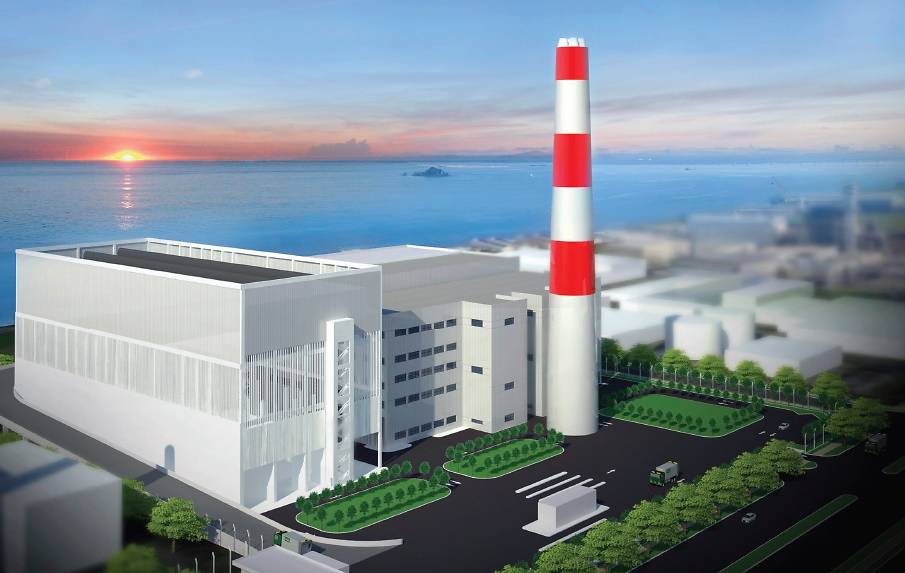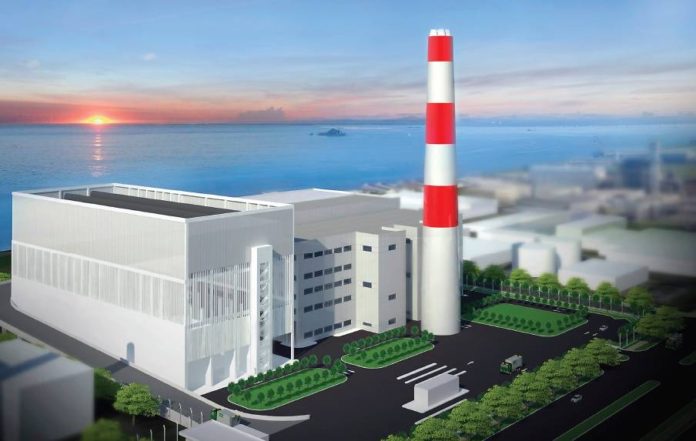SINGAPORE: As Hyflux’s bid to restructure its debt continues, authorities have been keeping a close eye on developments around one of the company’s assets – a waste-to-energy plant in Tuas that is on the cusp of completion.
In response to queries from CNA, the National Environment Agency (NEA) said it “has been closely monitoring discussions” among the stakeholders of the TuasOne waste-to-energy project so as to see it through its final phase of construction.
It has also recently informed Hyflux and its Middle Eastern suitor Utico that it was “critical” for stakeholders to reach an agreement quickly, such as making financing available, for the plant to be completed “expeditiously”.
TuasOne, according to the agency, is now 96 per cent completed.
READ: From making waves to drowning in red ink: Hyflux, Tuaspring and how a business giant came undone
“CROWN JEWEL” NEEDS FUNDS
Last week, the chief executive of Utico – the United Arab Emirates utility firm which plans to acquire an 88 per cent stake in embattled Hyflux – told Singapore reporters that the TuasOne project “needs more money next month”.
Describing the yet-to-be-completed plant as the local water treatment firm’s “crown jewel”, Mr Richard Menezes said Utico has agreed to provide the funds needed and that it had a meeting with NEA to discuss the project’s progress.
“We met NEA (on Aug 2) in the morning and NEA has said that they will support it as long as there is funding for next month,” he told reporters after attending Hyflux’s case management conference on Aug 2 at the Singapore High Court.
“(Hyflux is) running out of funds at the project level … and there was talk about who will pay for the flood lights,” added Mr Menezes.
When contacted, NEA confirmed the meeting with Utico, noting that it has been closely monitoring the discussions “for months” and during which, it may involve “occasional meetings with the TuasOne stakeholders, lenders and other interested parties”.
“At Utico’s request, NEA met Utico’s chief executive, Mr Richard Menezes, together with representatives from Hyflux on Aug 2 to discuss the progress of the TuasOne Waste-to-Energy plant project,” said the agency in its reply to CNA earlier this week.
“At the meeting, NEA informed Utico and Hyflux that it was critical that the TuasOne stakeholders, namely Hyflux, Mitsubishi Heavy Industries and the project’s lenders, come to a quick agreement to complete the project expeditiously,” it added.
This includes making available financing under the facility agreement or from other sources so as to allow remaining work on site to be completed, as well as testing and commissioning of the TuasOne facility to be accelerated, NEA said.
READ: Hyflux has until Aug 16 to sign definitive deal with Utico; secures 2-month moratorium extension
READ: Hyflux clarifies deadline to sign deal with Utico is Aug 26
WHAT IS TUASONE?
TuasOne, set to be Singapore’s sixth waste-to-energy plant, is designed to add 3,600 tonnes of incineration capacity per day to the nation’s waste disposal system. It is meant to meet Singapore’s medium-term waste disposal needs, said NEA.
Worth about S$750 million, the project was awarded to Hyflux and its Japanese partner Mitsubishi Heavy Industries in September 2015.
Under the project, the joint venture partners will provide waste treatment services exclusively to the NEA for a period of 25 years under a Design-Build-Own-Operate scheme.
TuasOne was slated to be completed in May 2019, but has seen its finish date pushed back as funds ran low.

Illustration of Hyflux’s TuasOne waste-to-energy plant. (Graphic: Hyflux)
Hydrochem, a Hyflux subsidiary which is the engineering, procurement and construction contractor of TuasOne, had lacked funding to continue construction in accordance with the project schedule, wrote founder-CEO Olivia Lum in an affidavit dated Apr 30.
Last month, Mitsubishi Heavy Industries injected an additional equity commitment of about S$23 million. This was to be deployed to finance the project “for the next few weeks”, said a Jul 15 bourse filing.
While there have been further negotiations with the project’s lenders since then, there continue to be delays in the project given “restructuring and funding issues”, according to Ms Lum’s recent Jul 29 affidavit.
“Given the multiple interested parties involved in these discussions, including the offtaker, they take time, but progress has been made,” she added.
The debt-ridden water treatment firm has repeatedly described TuasOne as having “significant” potential returns and that its completion will “enhance the value” of the group.
For instance, TuasOne can access monthly payments of about S$3.8 million from NEA, as consideration of the plant’s thermal waste -processing services and incentives for the generation of clean energy once it reaches commercial operation date, said Ms Lum in another affidavit dated May 27.
NEA said it currently expects TuasOne to turn operational in 2020.
“Until then, NEA has sufficient waste incineration capacity to meet the needs of our resident population,” it told CNA.
READ: Hyflux’s Tuaspring plant: The ‘noose around the neck’ that needs to be sold, but can it be done?
READ: Hyflux, UAE utility firm Utico ‘progressing’ towards S$400m deal
Hyflux, regarded as one of Singapore’s most successful business stories in its better days, has been under court-supervised restructuring for more than a year now.
It abruptly called off a deal with Indonesian consortium SM Investments in April and has been in search of a new rescue investor since.
With its fifth debt moratorium extension approved, it has until Sep 30 to work out how to return to solvency, although Utico has given it only until Aug 26 to sign a definitive agreement.
Amid the financial woes, Hyflux lost its largest asset, Tuaspring. The desalination plant was taken over by PUB on May 18 at zero dollars, after the national water agency served default notices on the company for operational defaults.





